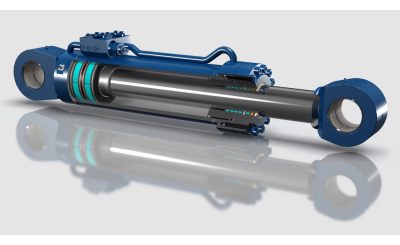The Briefs
- Volunteer fire departments face recruitment, funding, and training challenges that impact operational efficiency.
- Career firefighters benefit from structured training, stable funding, and full-time staffing for rapid response.
- Bridging the gap with specialized training and hybrid models improves overall fire service effectiveness.
Fire departments across the country operate under two primary models: volunteer-based and career-based services. Volunteer firefighters provide emergency response without financial compensation, often serving rural and suburban communities. Career firefighters work full-time, ensuring rapid response and specialized training. Differences in funding, staffing, and training create operational challenges. Bridging this gap strengthens fire services and enhances public safety.
Volunteer Fire Services: Challenges and Limitations
Recruitment and Retention Issues
Many volunteer fire departments struggle to attract and retain firefighters. According to the National Fire Protection Association, the number of volunteer firefighters has decreased from 897,750 in 1984 to 676,900 in 2020. Time commitments, training requirements, and work-life balance challenges deter new recruits. Rural communities often lack a steady pool of eligible volunteers. Some departments offer incentives like tuition reimbursement or tax credits to encourage participation. Increasing recruitment efforts helps sustain volunteer fire services.
Funding Constraints and Resource Availability
Volunteer departments rely on local government support, donations, and fundraisers. Limited budgets make it difficult to upgrade equipment and facilities. Some departments operate with outdated gear, increasing safety risks. Grants and state funding programs help offset financial limitations. Expanding financial support ensures volunteers have adequate resources.
Training and Certification Gaps
Training standards vary between volunteer and career firefighters. Many volunteers complete state-mandated certification courses, but training consistency remains an issue. Time constraints make it difficult for volunteers to meet advanced certification requirements. Some fire academies offer condensed training programs for volunteers. The National Fire Academy provides off-campus and online training opportunities to help volunteers meet professional development goals. Bridging training gaps ensures volunteers meet professional standards. Many aspiring firefighters take Fire Instructor 1 Online to gain essential teaching skills.
Career Fire Services: Strengths and Advantages
Full-Time Staffing and Response Efficiency
Career fire departments operate with 24/7 staffing, ensuring immediate emergency response. Structured shift schedules reduce response times and improve community safety. Firefighters receive steady income and benefits, enhancing job stability. Departments use advanced technology to optimize dispatch efficiency. Consistent staffing improves operational readiness.
Comprehensive Training Programs
Career firefighters undergo rigorous training, including fire suppression, medical response, and hazardous material handling. Fire academies provide structured learning environments with hands-on experience. Ongoing professional development ensures firefighters stay updated on new tactics. Cross-training opportunities expand firefighters’ skill sets. Higher training standards enhance fire service effectiveness. Many professionals enroll in Fire Officer 1 Classes to expand their leadership skills.
Funding, Equipment, and Facility Support
Career fire departments receive stable municipal funding for equipment, training, and station maintenance. Advanced firefighting technology, such as thermal imaging cameras, enhances response capabilities. Firefighters have access to modern facilities with designated training areas. Regular budget allocations ensure consistent operational improvements. Reliable funding strengthens overall department performance.
Bridging the Gap: Training and Career Development for Volunteers
Specialized Bridging Programs for Volunteer Firefighters
Some training programs help volunteers transition to career firefighting roles. Fire academies offer bridge courses to certify volunteers at professional levels. Certifications like Fire Investigator Certification increase volunteer skill sets. Bridging programs ensure training consistency between volunteer and career firefighters. These initiatives improve volunteer firefighter career advancement opportunities.
Cross-Training and Joint Operations
Volunteer and career firefighters benefit from joint training exercises. Coordinated drills enhance communication and teamwork during emergency response. Career departments mentor volunteers, fostering skill development. Some municipalities integrate hybrid departments to combine both models. Cross-training improves operational efficiency across fire services.
Financial Support for Volunteer Training Advancement
Grants and scholarships help volunteers access advanced training. Some fire departments provide tuition reimbursement for certification programs. State and federal funding supports volunteer firefighter development initiatives. Employers offer flexible work arrangements to accommodate firefighter training schedules. Financial support increases volunteer firefighter competency.
The Future of Fire Services: Collaborative Models
Hybrid Departments: Combining Volunteer and Career Firefighters
Some communities integrate career and volunteer firefighters within the same department. This model balances cost efficiency with operational readiness. Volunteers supplement career staff during peak demand periods. Hybrid departments improve service coverage in growing communities. Collaboration strengthens fire service capabilities.
Policy Changes to Support Unified Training Standards
National training standards ensure consistency across volunteer and career fire services. Fire academies develop curriculum pathways for volunteers seeking career transitions. The National Fire Academy requires on-campus students to complete Incident Command System (ICS)-100-level and ICS-200-level training before applying for a course. Legislation promotes funding for training and recruitment programs. Standardized policies improve firefighter preparedness and effectiveness. Supporting training reforms enhances overall fire service quality.
FAQ: Common Questions About Volunteer and Career Firefighting
What are the biggest challenges volunteer fire departments face today?
Volunteer departments struggle with recruitment, funding, and maintaining training standards. Many rely on donations and grants to operate effectively. Increasing incentives and training support can help address these challenges.
How can a volunteer firefighter transition into a full-time firefighting career?
Volunteers can complete bridge programs or certification courses to meet career firefighter qualifications. Many fire departments offer mentorship programs to help volunteers gain experience. Earning Firefighter I and II certifications improves career opportunities.
Do volunteer firefighters receive the same level of training as career firefighters?
Volunteer training varies by department and state regulations. Some complete certification programs similar to career firefighters. Additional training opportunities help volunteers reach professional standards.
Building a Stronger Fire Service for the Future
Collaboration between volunteer and career fire departments strengthens emergency response. Providing training support and funding ensures volunteers meet professional standards. Hybrid models and policy changes improve fire service efficiency. Investing in firefighter development benefits communities and enhances public safety.






